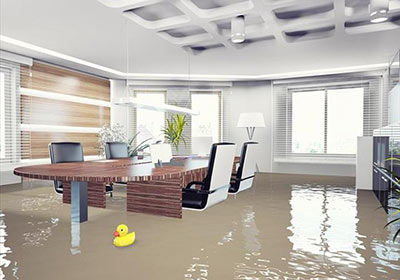Water damage can strike a commercial property without warning—burst pipes, leaky roofs, faulty appliances, or natural disasters can disrupt business operations within minutes. For business owners, the consequences can be more than just a wet floor. Damaged equipment, inventory loss, mold growth, and structural deterioration can lead to serious financial setbacks. Understanding the essentials of commercial water damage cleanup is crucial to reducing downtime, protecting assets, and ensuring business continuity.
The Immediate Impact Of Water Damage
When water infiltrates a commercial space, the first and most visible impact is the disruption of daily operations. Whether it’s a small retail store, a restaurant, or a large office complex, excess water can damage flooring, walls, furniture, and sensitive equipment like computers or servers. More significantly, if water seeps into unseen places, it erodes the building’s structural integrity and fosters the growth of mold and mildew.
Mold is particularly hazardous in commercial environments, as it poses health risks to employees and customers. If someone has respiratory troubles or other health concerns as a result of exposure, this could result in liability issues.
Time Is Of The Essence
In the wake of a water-related incident, time is critical. Delays in response allow water to spread, penetrating deeper into surfaces and increasing damage. It is possible for mold to grow within 24 to 48 hours. The faster you act, the more you can salvage—and the lower the total cost of recovery.
Engaging a professional water damage cleanup company early can make a significant difference. These specialists have the tools and expertise to assess the situation, contain the water, and begin the drying process immediately.
The Cleanup Process
The cleanup process begins with a thorough inspection and damage assessment. Water removal is the top priority, and professionals typically use industrial-grade pumps and vacuums to extract standing water. Once the excess water is gone, drying and dehumidification begins. This step involves the use of high-speed air movers and powerful dehumidifiers to eliminate moisture from walls, floors, and hidden cavities.
After the space is dry, the cleanup team will sanitize and clean all affected areas. This procedure is essential for getting rid of smells and stopping the growth of bacteria. Finally, any damaged materials—such as drywall, flooring, or insulation—may need to be repaired or replaced.
Choosing The Right Restoration Partner
Not all water damage cleanup companies are created equal. When selecting a service provider, business owners should look for licensed, insured professionals with experience in commercial settings. Time-tested industry certifications from organizations are also valuable indicators of quality.
It’s also helpful to partner with a provider that offers emergency services 24/7. Water damage doesn’t always happen during regular business hours, and having a reliable restoration partner on call can be the difference between a quick recovery and prolonged closure.
Insurance And Documentation
One of the most stressful aspects of commercial water damage is dealing with insurance. Documentation is key—take photos and videos of the damage as soon as it is safe to do so. Maintain a detailed list of damaged items, including inventory, electronics, and furniture. This documentation will support your claim and help ensure you receive appropriate compensation.
A reputable cleanup company can often work directly with insurance providers, helping streamline the claims process and ensure nothing is overlooked.
Long-Term Prevention Matters
While not all water-related incidents can be prevented, many are avoidable with the right precautions. Routine maintenance of plumbing systems, roofing, HVAC units, and appliances can reduce the risk of sudden leaks or breakdowns. Installing moisture sensors and leak detectors in high-risk areas can provide early warnings and help stop small problems before they escalate.
Having a clear emergency response plan is also essential. All staff should know what to do in the event of a water emergency, including shutting off water supply lines, protecting key equipment, and contacting emergency services.
The Cost Of Inaction
The true cost of water damage isn’t just measured in repairs. Lost business days, customer dissatisfaction, damaged reputation, and possible legal claims can have long-term effects on a company’s financial health. In many cases, the initial cleanup cost is far lower than the losses incurred from business interruption or property deterioration.
Final Thoughts
Commercial water damage cleanup is not just about mopping up water—it’s a strategic, time-sensitive process that protects your assets, your people, and your ability to operate. As a business owner, knowing what to do and who to call can make all the difference. Your company can recover stronger, safer, and more equipped for whatever comes next if you have a skilled restoration strategy in place and act swiftly.

